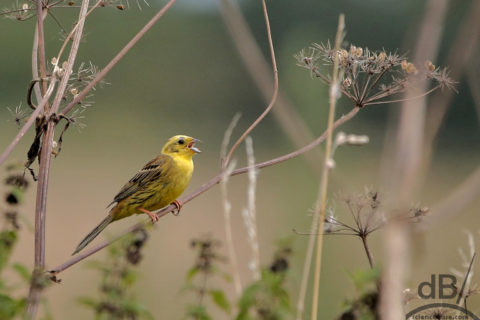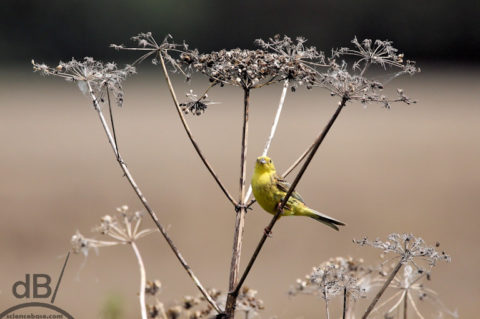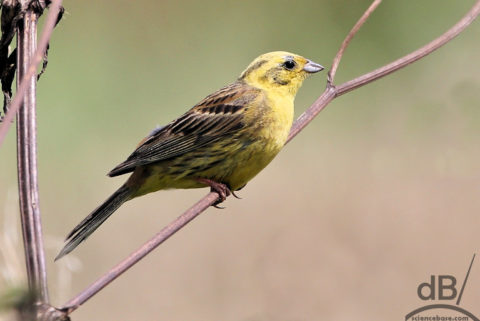Often the way, you’re looking for one bird, when you hear and then spot another. Happens a lot with the yellowhammer (Emberiza citrinella). Today, I was walking a short distance along the Aldreth Causeway and could hear avian jostling over the floodbank, scrambled to the top, saw nothing but flittering wings heading into the scrub, turned around and encountered this yella fella, sitting among the seed heads, not twenty feet from where I stood, making his call…

It’s distinctive call, Mrs Sciencebase’s Dad always told her, sounds like the bird was passing out the post-war rations: “two-slices-of-bread-but-no-cheeeeese” (Story No. 237). But, Richard Smyth, my E&T stablemate, also shows his age in his book A Sweet Wild Note by suggesting it’s more of a “chika-chika-chika-chikaaaah”. It sounds very similar to the pine bunting with which it interbreeds and like a different avian dialect version of the reed bunting’s call. Either way the yellowhammer is a lemon-coloured bunting and definitely not a canary as one fellow dogwalker insisted!

The hammer part of its name comes from the German word for bunting, ammer, first recorded in 1553 as yelambre. Oddly enough the “Emberiza” part of its scientific binomial (the name a lot of people refer to as an organism’s “Latin name”) also comes from the Old German embritz, meaning bunting. Citrinella is an Italian word for a small yellow bird.

I got reasonably close to this male yellowhammer and perhaps captured the best few shots of this species I have taken to add to my bird gallery.